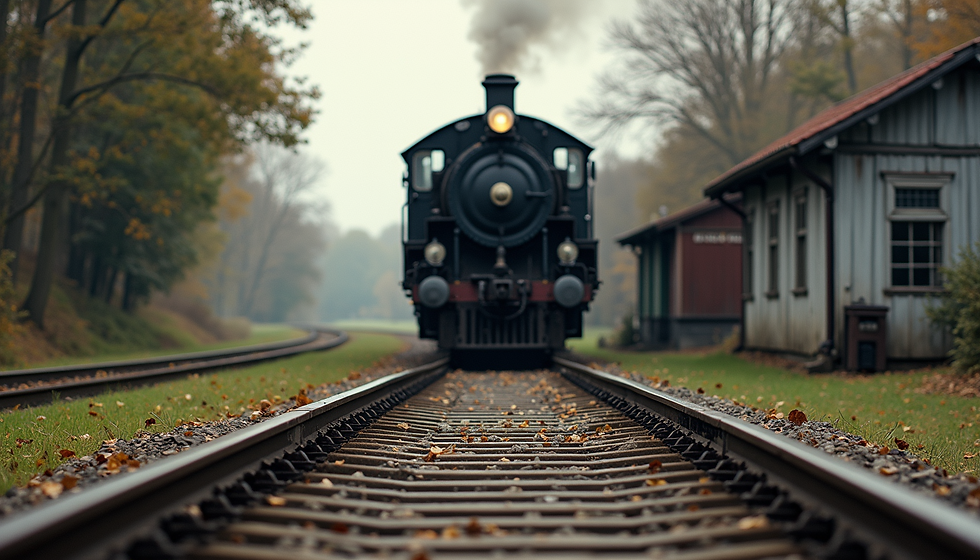Uncovering the Shadows: Did Propaganda Fuel Irish and Scottish Rivalries During the Catholic Crusades?
- PsychicUnderLord (Psychic)

- May 17
- 4 min read
The centuries surrounding the Catholic Crusades were a complicated blend of faith, territorial ambitions, and cultural conflict. As fervor swept across Europe for a campaign to reclaim the Holy Land, the neighboring Celtic nations of Ireland and Scotland found themselves caught in a web of strife. While historical accounts often portray the Crusades as a unified effort by Christendom, the reality was far more nuanced. Did propaganda fuel rivalries between the Irish and Scottish, twisting perceptions and inciting conflict? This post examines these questions, focusing on the potential manipulation that may have intensified divisions between these two neighboring cultures.
Historical Context: The Landscape of the Crusades
The Crusades, which spanned from the late 11th to the early 13th centuries, were ignited by a combination of religious beliefs and earthly ambitions. The movement began in 1096 when Pope Urban II declared a holy war aimed at reclaiming Jerusalem from Muslim control. But these campaigns were not simply about faith; they involved complex power plays and economic interests. The goal was also to unify a divided Europe under the banner of Christianity.
In this turbulent backdrop, both Ireland and Scotland were vibrant cultures with rich histories. Yet, as the Crusades unfolded, rivalries began to simmer, fueled by external influences and internal power struggles. In Scotland, local clans fought for regional power, while in Ireland, various factions were often at odds, particularly across religious lines.
The Role of Propaganda: Seeds of Division
Propaganda has always been a powerful tool for shaping public opinion and rallying support, and during the Crusades, it was wielded skillfully. The Church framed these wars as divine missions, portraying adversaries, including fellow Christians, as obstacles to salvation.
For example, Church leaders often depicted the Irish as "infidels" or "heathens," distorting their identities to serve a broader agenda of control. This type of messaging painted a picture of a clear battle between good and evil. The portrayal of Irish resistance as treachery influenced how both nations viewed one another, creating an enduring mistrust that would fester for centuries.
Local Responses and Regional Rivalries
As the power of the Church grew, local leaders in Ireland and Scotland often found themselves at odds, their conflicts exacerbated by external influences. Records show that during the Crusades, Scottish clans, such as the MacDonalds and the Campbells, experienced heightened tensions over alliances and allegiances. Meanwhile, in Ireland, figures like the O'Neills and the Fitzgeralds engaged in feuds over territory and power, sometimes fueled by the propagandist narratives of the Church.
Interestingly, the desire for independence among Scottish clans was affected by English intervention, which was viewed as a Catholic encroachment. On the other hand, Irish factions struggled with internal divisions, where Catholicism often pitted different groups against each other, deepening the conflicts within their communities.
The Impacts of Religious Fervor
Religious zeal during the Crusades transformed small-scale disputes into significant crises. Both Irish and Scottish communities began to see themselves through a lens of collective identity, viewing their struggles as part of a grander narrative. Allegiances to the Church became paramount, and even minor grievances could be framed as part of an epic battle between light and darkness.
The pervasive narratives of "us versus them" reshaped relationships and solidified rivalries. For instance, during battles such as the Battle of Stirling Bridge in 1297, political conflicts rapidly morphed into religious disputes, creating a potent mix of ambition and animosity.
The Role of Political Leaders
Key political leaders shaped the role of propaganda in deepening sectarian divides. Figures such as William Wallace in Scotland and Brian Boru in Ireland rose to prominence during this era, recognizing the influence of propaganda strategies. They harnessed religious fervor to mobilize their supporters, often manipulating religious identity for political purposes.
The conflict between religious authority and national pride became more pronounced during the Crusades. Leaders utilized the framework of faith to fuel their ambitions while cloaking their power struggles in religious narratives. For instance, Wallace’s rebellion was not only a struggle against English rule but also became a symbol of religious resistance against perceived threats from Catholic neighbors.
The Legacy of Division: Long-Term Consequences
The rivalries and divisions born during the Crusades left lasting marks on both Irish and Scottish identities. The historical grievances nurtured by propaganda created a cycle of mistrust that reverberated through generations. Each nation, while facing external pressures, often looked inward, rallying their people against a common enemy—often the other.
For example, as both cultures faced English domination, their respective leaders invoked these early narratives to foster unity among their people against a larger adversary. The lingering effects of these divisions are evident even today, where echoes of past conflicts still affect contemporary relationships.
Reflections on Contemporary Implications
Understanding the intricate dynamics of Irish and Scottish rivalries during the Crusades offers valuable insights into contemporary relationships. The shadows cast by historical propaganda continue to shape cultural and political interactions in both nations today.
In modern contexts, national narratives strongly influence individual identities, highlighting the importance of acknowledging these past grievances. Recognizing the shared history allows for deeper reflection on the complexities of identity and the potential for greater understanding between both nations.
Final Thoughts
The interplay between propaganda, religious fervor, and political ambition during the Catholic Crusades created a historical landscape defined by rivalry and division between the Irish and Scottish nations. By examining the narratives and tensions of the time, we gain insights into how these societies evolved, shaping their identities for generations.
As we look back on a time when propaganda fueled divisions, it becomes evident that understanding this history is crucial for fostering the unity and cooperation that both peoples strive for today. The journey toward acknowledging our shared heritage can lead to a more connected and harmonious future.



Comments